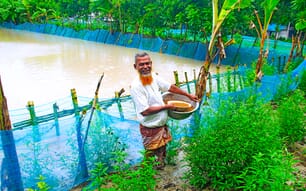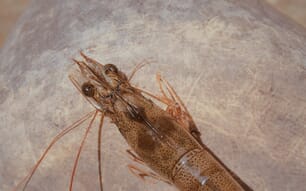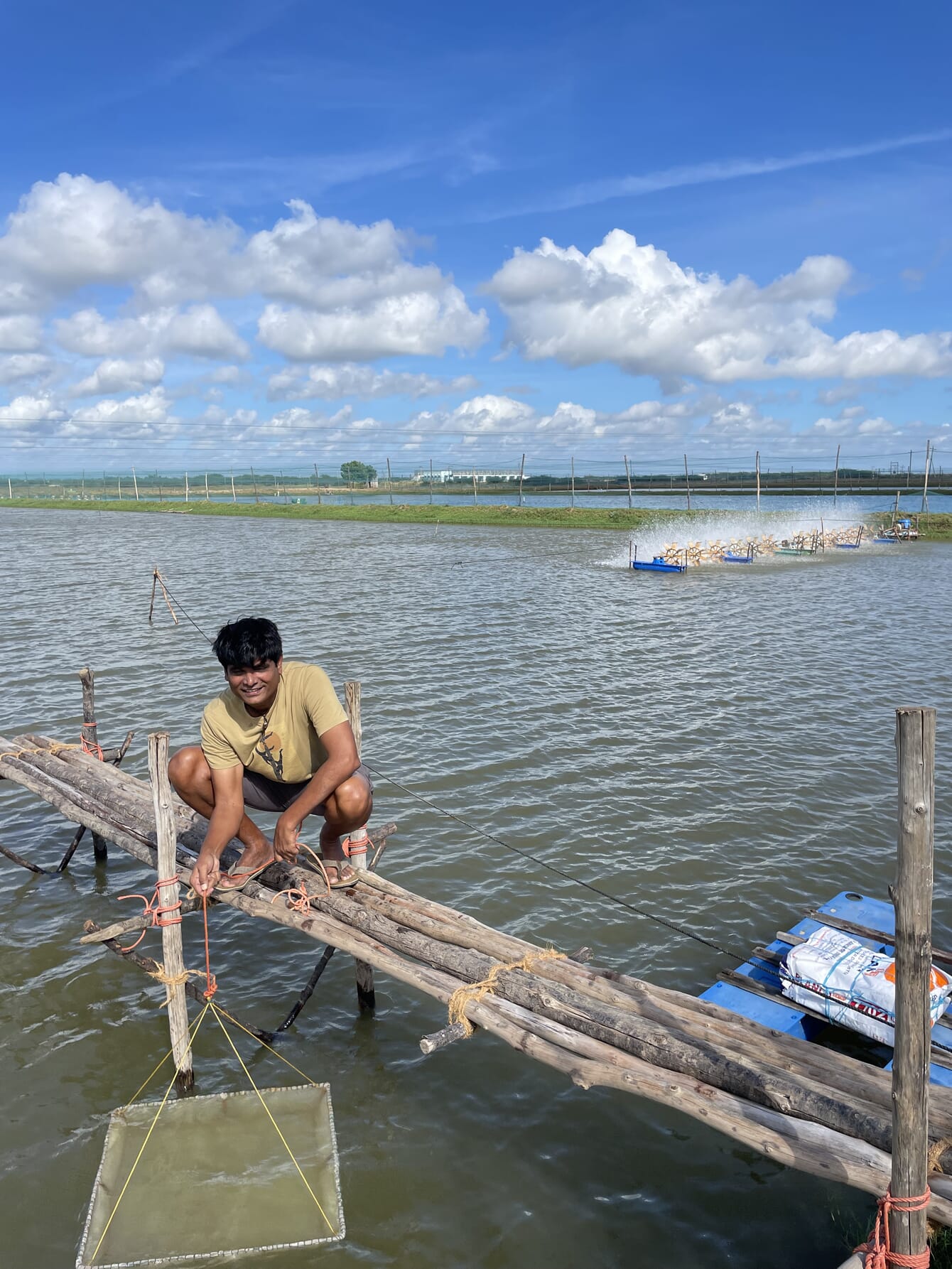
© Bala Subramaniam
Balasubramaniam V, who is widely known as Bala, has been farming shrimp in Tamil Nadu, southern India, for 30 years. His 60-acre operation – called Certitude Farms – currently produces around 200 tonnes of vannamei and monodon a year.
Despite its positive name, Certitude got off to an uncertain start, as it was established soon after whitespot syndrome virus (WSSV) hit the subcontinent for the first time. While not an optimal beginning, it has made him sanguine about the current price crisis.
“Certainly there is a lot of despair, no doubt about it. Let's not kid ourselves saying everything is fine, but we also realise that shrimp farming is cyclical, so farmers are hanging in, hoping for a better day,” he observes.
This attitude explains why India’s national shrimp production has remained fairly stable, despite several years dominated by low margins.
“Farmers are hanging in there because there's nothing else they can do. But the value has definitely dropped, which is a very clear sign that farmers are losing out big time. It's threatening their very survival. How long can a farmer go on losing money? We don't know. Whatever money we've made, and we have some reserves, we are running out of all of that,” Bala observes.
As a result, consolidation is happening, with many 40-50 acre farms joining together to make 500-1000 acre ones.
“Those guys are able to use economies of scale: they get a better price for their feed, they get a better price and quality also for their seeds. And that way they're able to reduce their costs,” Bala notes.
Another pattern is that some farmers are moving out of shrimp into other species.
“In Andhra Pradesh farmers have an option of switching to pangasius or Indian major carp. If farmers switch to fish maybe that will be a good thing, as the remaining farmers will get a better price,” Bala ventures.
The Certitude approach
On his own farm Bala aims to dodge the worst of the issues hitting commodity shrimp by producing fewer, larger shrimp by stocking only 20-30 shrimp per square metre, with the aim of growing them to 25-30 grams within 100 days.
“That still has a reasonable margin for me to survive, provided I don't get hit by diseases. So we do all the proper preparation to help avoid EHP, white faecal disease and white spot disease, it is all about biosecurity measures and the seed quality,” he explains.
However, as he notes, these measures all increase production costs.
“Am I making money? No, I'm not even able to draw a salary out of these past two or three crops. I’m still paying my 20-25 employees, but they are not very happy because I'm not able to give them a bonus. But they know these are difficult days. We need to hang in there,” Bala urges.
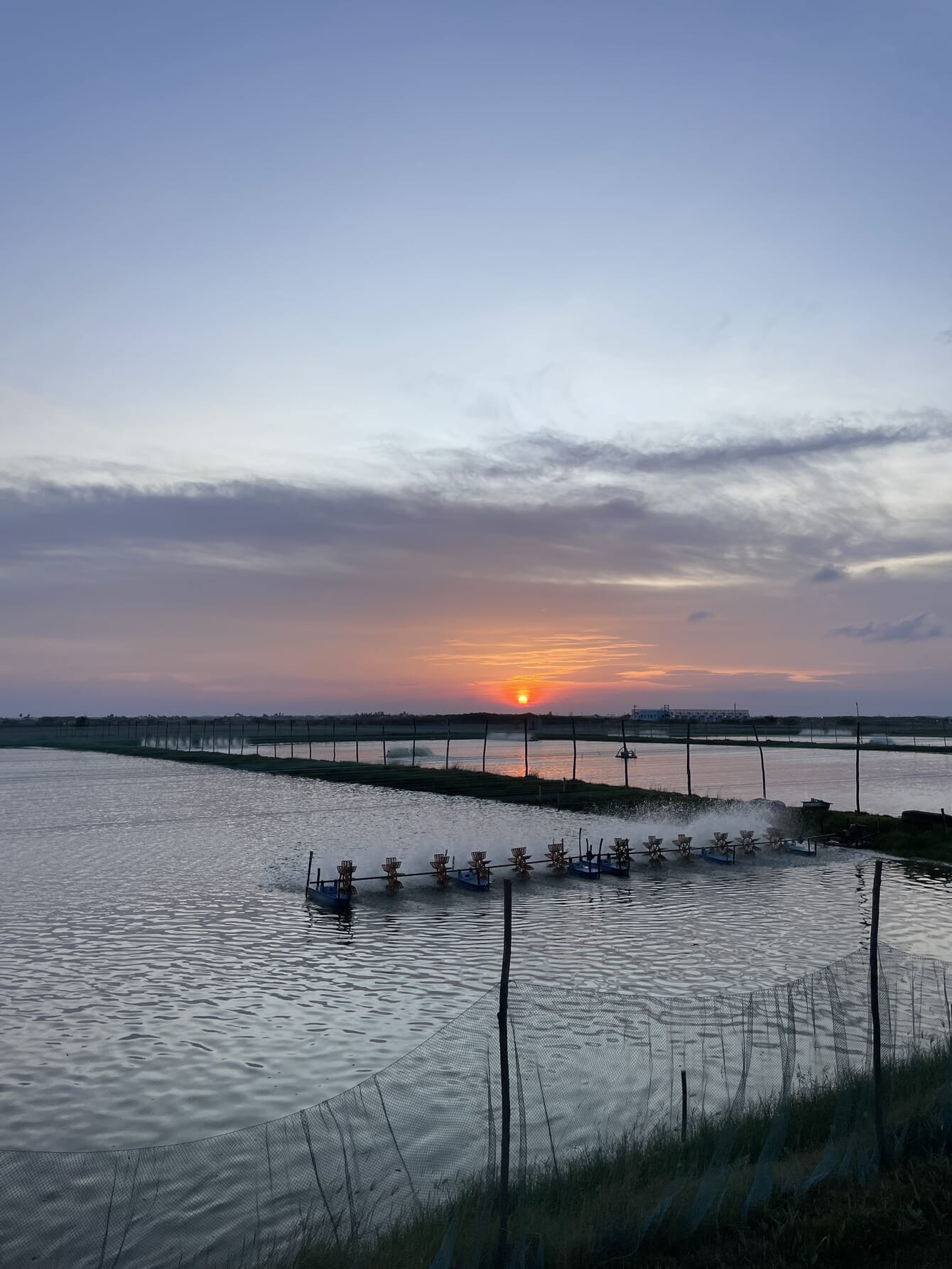
© Bala Subramaniam
While Certitude Farms has managed to retain a loyal workforce, Subramaniam is concerned about the lack of youngsters looking to join the sector.
“There's one guy who's been with us right from the start and at least 50 percent of the guys are have been here ten years plus. The sad part is that the younger generation prefers to go to the cities and work, rather than being in a village and working out in the sun. Our average employee age is above 50,” he reflects.
“It’s definitely an issue, so automation has to come in. All my ponds are now fed with automatic feeders, so my dependence on labour is relatively limited,” he adds.
While Indian farmers are not the only shrimp players to be struggling, Bala points out that the production costs aren’t so high everywhere.
“In Ecuador, because their animals are tolerant to white spot virus, they don’t have to bother about pond preparation, biosecurity measures or water treatment. So, they’re saving a lot of money. And because the genetics are tolerant to diseases, the success ratio is much higher than what we are doing,” Bala reflects.
“That's the biggest difference between India and Ecuador: when I speak to Ecuadorians, they may have a lower survival in some ponds, but they say they don't have any such thing as a failed crop,” he adds.
How to meet the challenges
Ecuador’s use of SPR, rather than SPF, shrimp seems to have paid off for them and Bala Is convinced that developments in genetics are the most important means of reducing the impact of disease. As a result, he argues for a move away from fast growing lines to more robust ones.
“The new generation of vannamei grows half a gram, 0.6 grams, even sometimes 0.75 grams a day – the growth is fantastic, but they are so susceptible not only to disease, but also to the slightest change in the weather,” he points out.
“So, genetics has to play a very strong role, we need animals that can at least tolerate, if not resist, the pathogens as well as stand up to the vagaries of the weather,” he adds.
And Bala believes that he’s on the right track in terms of where he sources his shrimp genetics from.
“SyAqua’s shrimp have been giving us very good results for the past two, three crops. Many farmers are very happy with that particular company – although they're growing a little slow, they can withstand the weather conditions and tolerate white faecal disease to some extent,” he says.
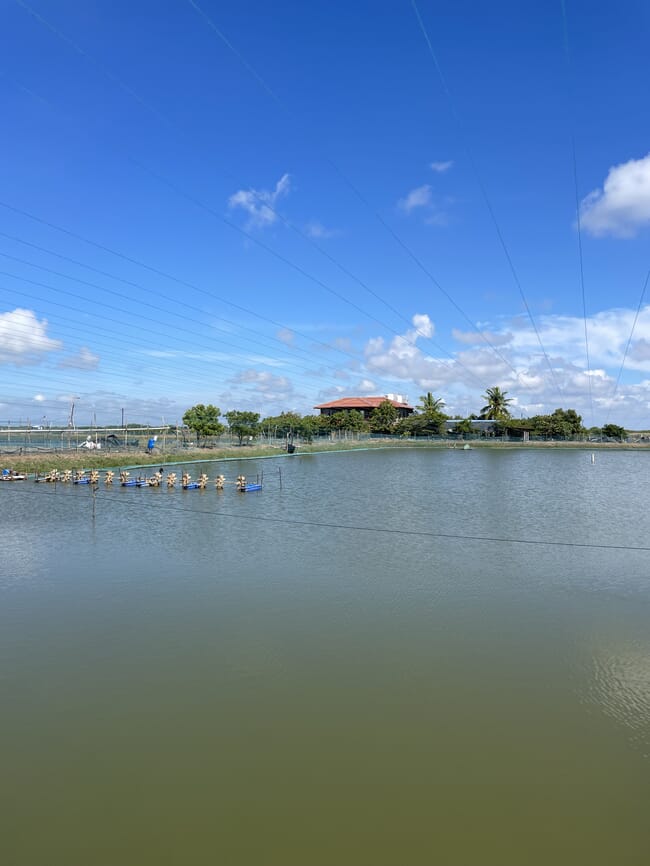
© Bala Subramaniam
Bala is also working with the Indian government to trial production of the native shrimp species, Penaeus indicus.
“It can grow in very high densities, and it can grow in high salinity, unlike vannamei, and it can tolerate high temperatures,” says Bala.
“Unfortunately, since vannamei was ruling the roost, nobody worked on the genetic improvement of this particular species. If they had done this ten years back, by now we would not have to depend on an exotic species,” he adds.
However, two years ago Bala began to trial new strains of Indicus with the government.
“We want the government to focus on developing a genetically improved, pathogen tolerant Indicus programme. We will harness its natural capability to survive in the local environment and we will add to this through selective breeding and through pathogen exposure. After four or five generations they should be able to tolerate the weather and the diseases,” he reflects.
Bala is aware that prices largely relate to macroeconomic forces that are beyond farmers’ control. However, he doesn’t just blame global inflation.
“The big retailers in Europe, America and Japan are being greedy. They have realised that they are in a buyer's market. There's oversupply. They don't need to pay us a better price and they don't need to cut down on the consumer price also, because now they are maximising their profits,” he claims.

© Balasubramaniam V
However, in the longer term, Bala believes that there’s scope to grow the domestic market.
“We have at least 100 million people in India who will be comfortably able to buy and eat shrimp. So, if we open up new markets like this then yes, there is a hope for better price,” he reflects.
Another possible scenario that could improve prices is if production starts to fall in countries such as India and Ecuador.
“Now white faecal disease has entered Ecuador, so it may take a few years for them to start feeling the difficulty of managing diseases. And something may happen in India where production will come down, consolidation will happen and the price will rebound. I've seen this so many times in this past 30 years: it doesn't stay bad,” he observes.
“We have to hang in there, because once the tide rises, we have to be there to catch it,” he concludes.


